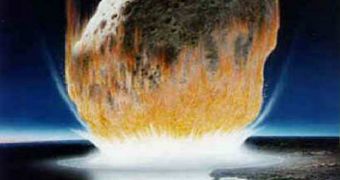Now we have Bruce Willis to save us, but 13,000 years ago, the Americans didn't have their hero to save them from the Armageddon they experienced. New proof brought by a team from the University of California at Santa Barbara shows that a large comet may have exploded over North America 12,900 years ago, explaining the puzzle of a sudden cooling of much of the planet and the extinction of megafauna, such as the mammoths.
"The discovery may explain some of the highly debated geologic controversies of recent decades." said co-author James Kennett, a paleoceanographer.
The Younger Dryas (Dryas is a cold climate tundra grass) is a period of abrupt cooling of about 1,000 years at the beginning of the current warm interglacial period, when the proper Ice Age was gone. Proof for the temperature change is offered by marine sediments and ice cores. "The comet before fragmentation must have been about 4 km (2.5 mi) across, and either exploded in the atmosphere or had fragments hit the Laurentide ice sheet (northeastern North America)", wrote the researchers.
The event would have caused fiery wildfires, destroying vegetation that was the food base of huge herbivores, like the woolly mammoths, which went extinct. The Clovis people, the first human culture found in North America, relied on the mammoth hunt, and the event wiped out their culture.
The team detected in over 12 archaeological sites in North America high levels of iridium, a rare element on Earth, almost exclusively associated with space bodies like comets and meteorites. They also encountered metallic microspherules typical to comet fragments; they contained nano-diamonds, which form at extremely high temperatures during explosions. The fullerenes (buckyballs) coming from the comet contained gases trapped inside, which pointed to a cosmic origin.
The impact rapidly melted a large portion of the Laurentide ice sheet (which covered much of what is now southeastern Canada and northeastern US), pouring suddenly a high volume of freshwater into the north Atlantic and Arctic Oceans. "This, in turn, would have caused a major disruption of the ocean's circulation, leading to a cooler atmosphere and the glaciation of the Younger Dryas period. We found evidence of the impact as far west as the Santa Barbara Channel Islands.", Kennett said.

 14 DAY TRIAL //
14 DAY TRIAL //